Abstract
Urinary tract infection with Pseudomonas aeruginosa was induced in mice by transurethral inoculation of the organism into the bladder, followed by urethral obstruction for 6 h. The infection was mostly localized in the urinary organs. P. aeruginosa P9 was selected as the challenge organism from 10 laboratory strains of P. aeruginosa. After the inoculation of 10(7) colony-forming units of P. aeruginosa P9, transient bacteremia was observed in some of the mice from 6 h to 1 day after the inoculation. The number of organisms in the bladder tissue gradually decreased, whereas that in the kidneys increased to levels of 10(6) to 10(7) colony-forming units in 3 days, and these levels remained up to 2 weeks after the inoculation. The organisms gradually disappeared thereafter, and spontaneous recovery took place. The organisms could be recovered from the kidneys of 95% of the mice, and the gross lesions in the kidneys were observed in 77% of the mice 1 week after inoculation. The method developed here is simple and may be useful in the study of urinary tract infections due to P. aeruginosa and other species of bacteria.20
Full text
PDF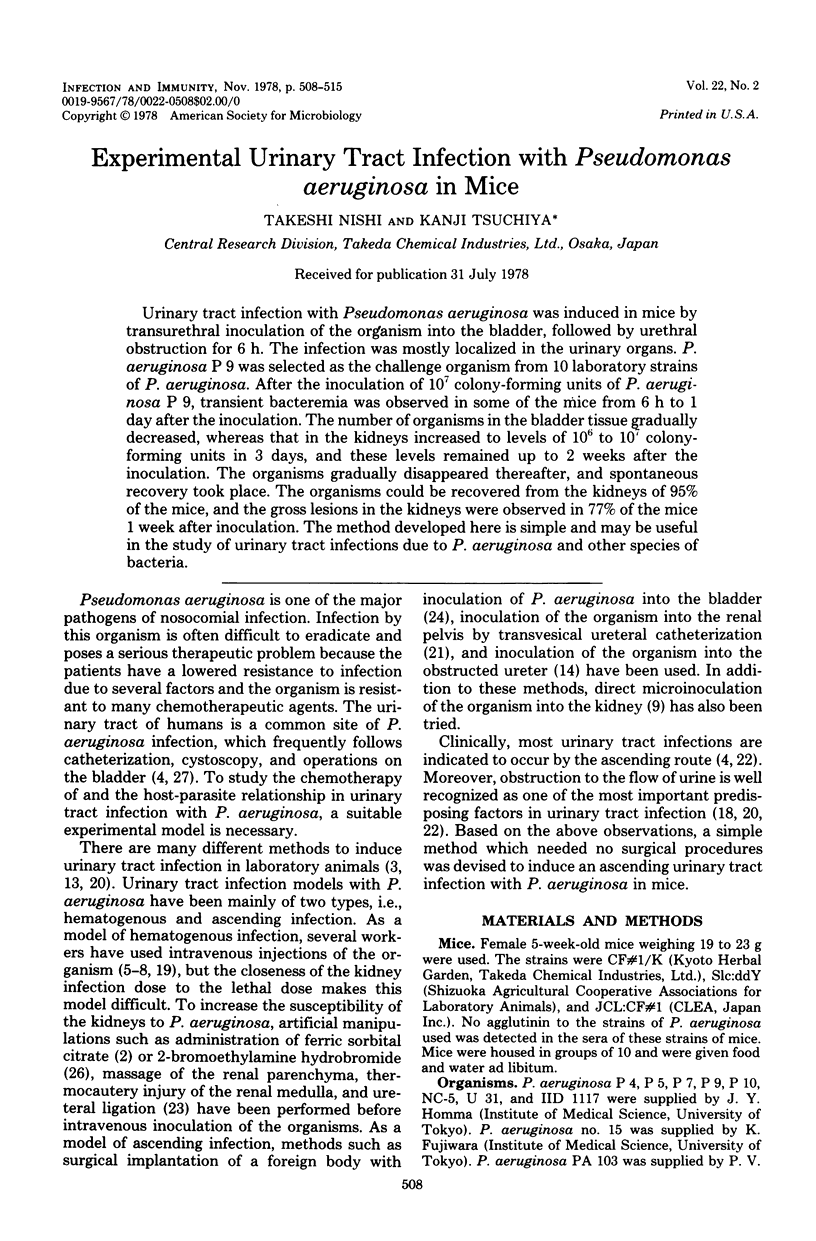
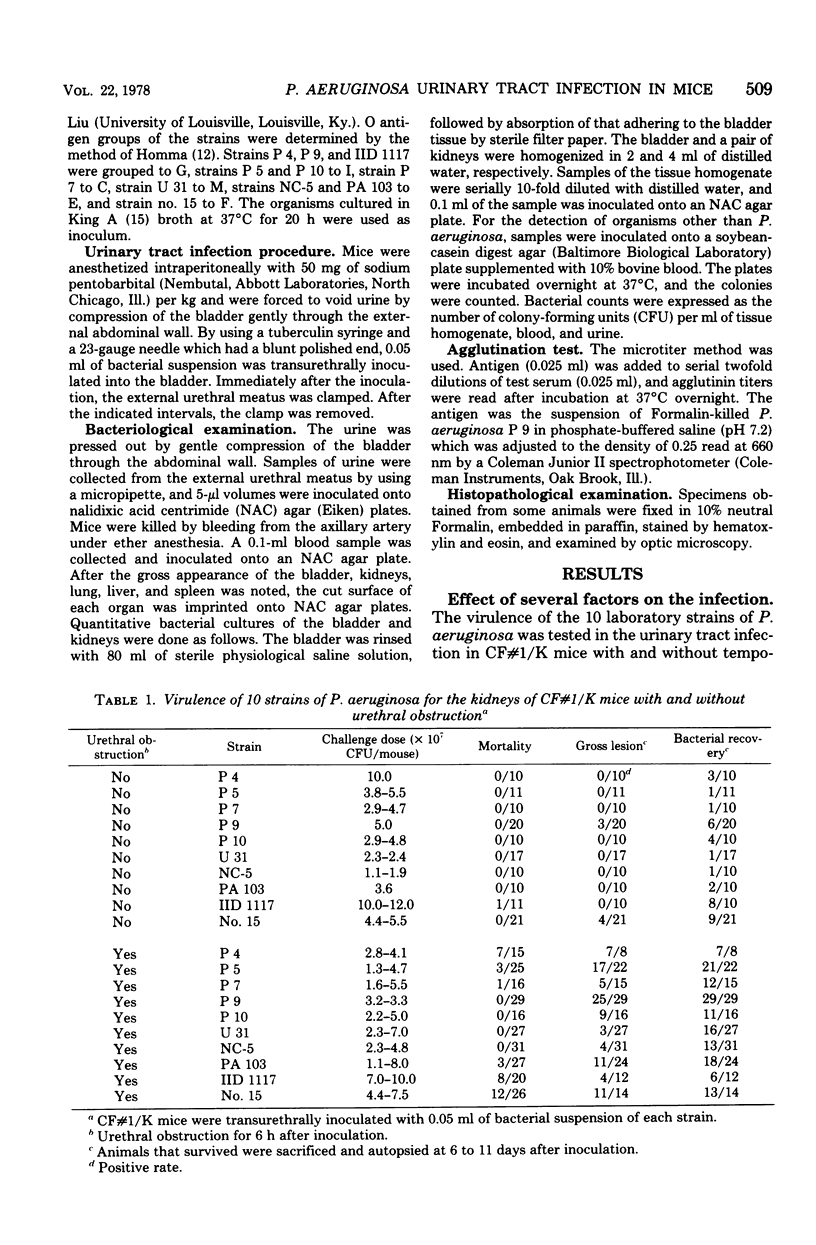
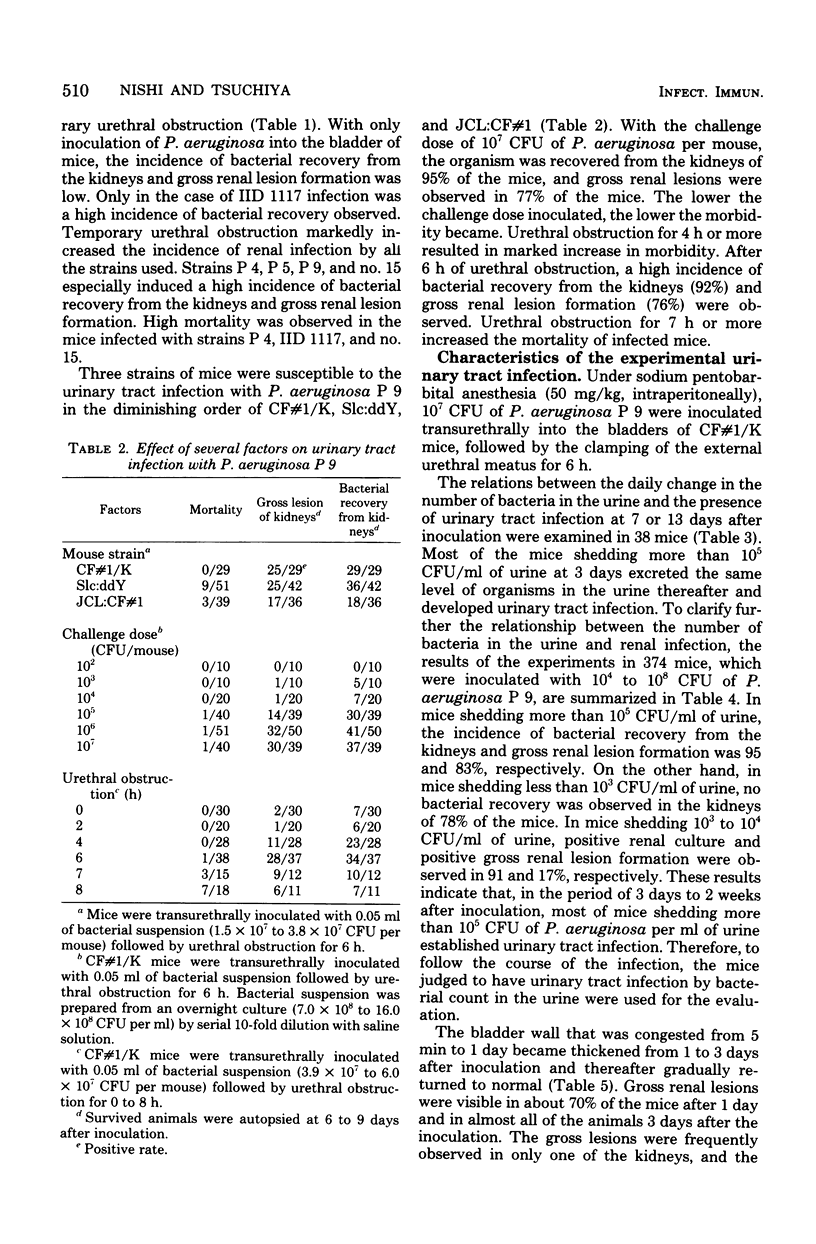
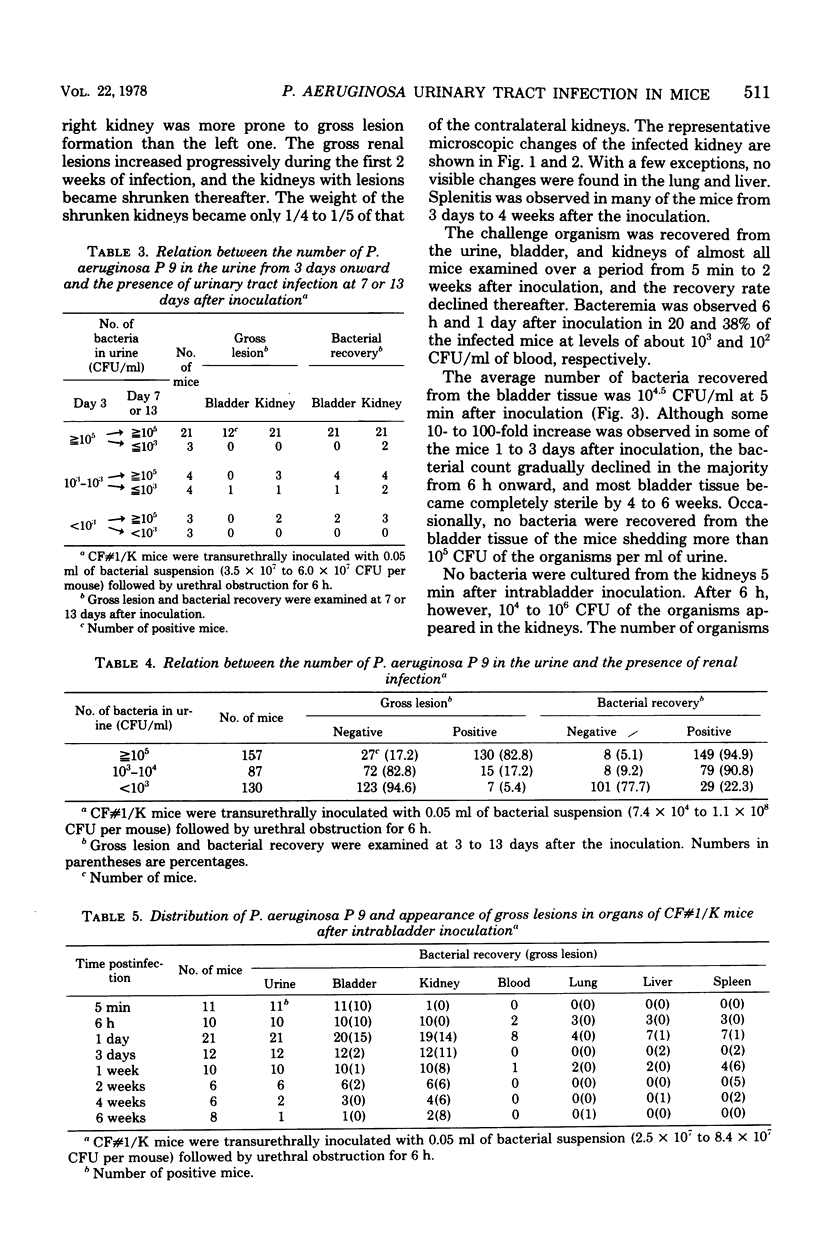
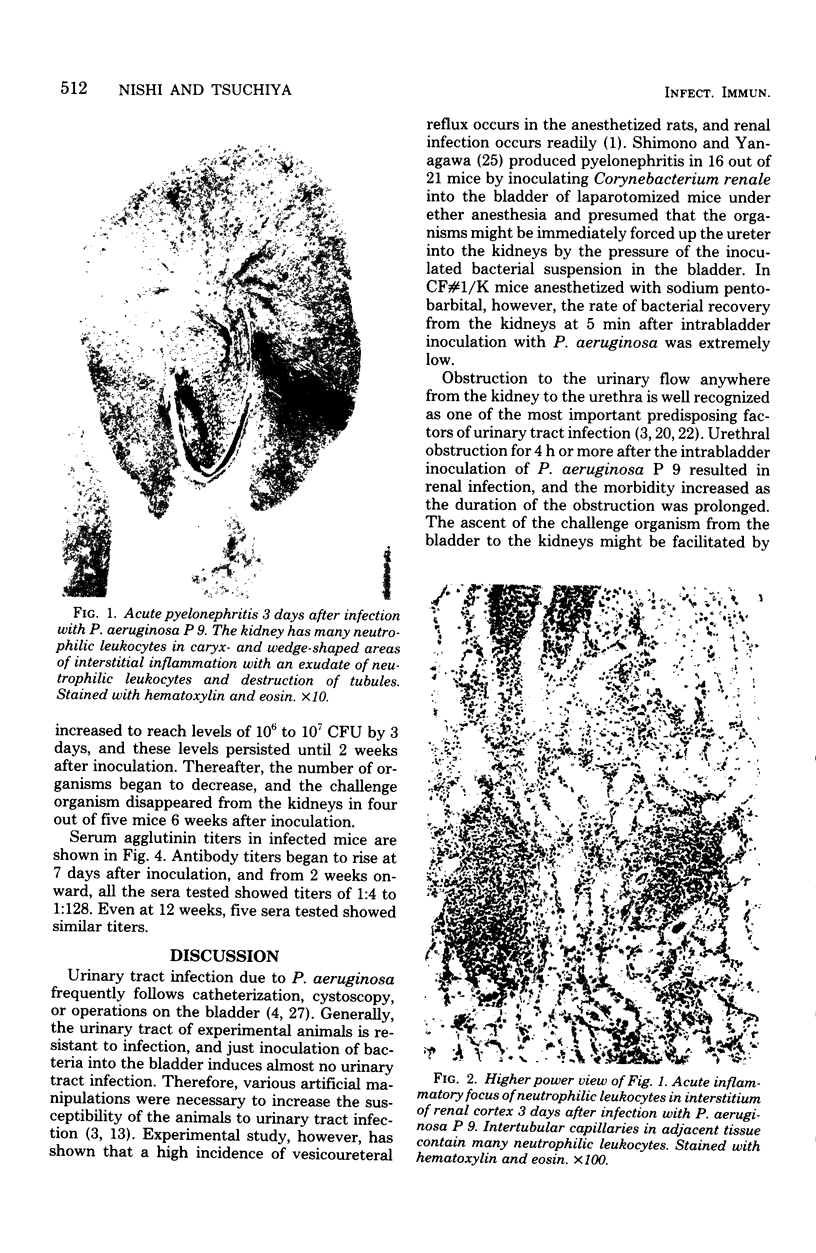
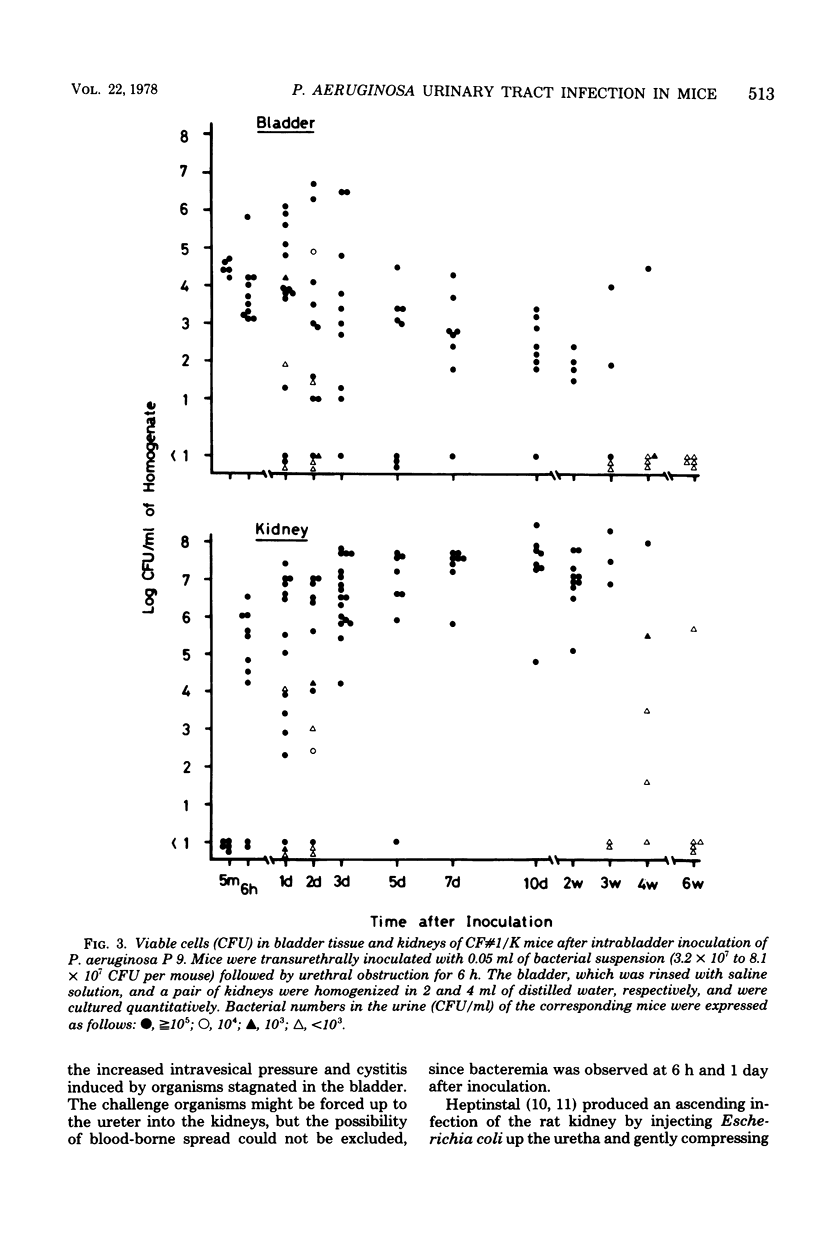


Images in this article
Selected References
These references are in PubMed. This may not be the complete list of references from this article.
- ANDERSEN B. R., JACKSON G. G. Pyelitis, an important factor in the pathogenesis of retrograde pyelonephritis. J Exp Med. 1961 Sep 1;114:375–384. doi: 10.1084/jem.114.3.375. [DOI] [PMC free article] [PubMed] [Google Scholar]
- GORRILL R. H. Bacterial localisation in the kidney with particular reference to Pseudomonas pyocyanea. J Pathol Bacteriol. 1952 Oct;64(4):857–864. doi: 10.1002/path.1700640417. [DOI] [PubMed] [Google Scholar]
- GORRILL R. H., DENAVASQUEZ S. J. EXPERIMENTAL PYELONEPHRITIS IN THE MOUSE PRODUCED BY ESCHERICHIA COLI, PSEUDOMONAS AERUGINOSA AND PROTEUS MIRABILIS. J Pathol Bacteriol. 1964 Jan;87:79–87. doi: 10.1002/path.1700870112. [DOI] [PubMed] [Google Scholar]
- GORRILL R. H. THE FATE OF PSEUDOMONAS AERUGINOSA, PROTEUS MIRABILIS AND ESCHERICHIA COLI IN THE MOUSE KIDNEY. J Pathol Bacteriol. 1965 Jan;89:81–88. doi: 10.1002/path.1700890110. [DOI] [PubMed] [Google Scholar]
- HEPTINSTALL R. H. EXPERIMENTAL PYELONEPHRITIS. ASCENDING INFECTION OF THE RAT KIDNEY BY ORGANISMS RESIDING IN THE URETHRA. Br J Exp Pathol. 1964 Aug;45:436–441. [PMC free article] [PubMed] [Google Scholar]
- Harris D. M. The incidence and nature of pyuria in experimental murine pyelonephritis: a re-appaisal of the Sternheimer-Malbin stain. J Pathol Bacteriol. 1968 Jul;96(1):77–87. doi: 10.1002/path.1700960109. [DOI] [PubMed] [Google Scholar]
- Hatala M., Prát V., Liska M., Konícková L., Slugen I. An experimental model of Pseudomonas aeruginosa renal infection in rats. Zentralbl Bakteriol Orig A. 1975;230(4):466–469. [PubMed] [Google Scholar]
- KING E. O., WARD M. K., RANEY D. E. Two simple media for the demonstration of pyocyanin and fluorescin. J Lab Clin Med. 1954 Aug;44(2):301–307. [PubMed] [Google Scholar]
- Kobayashi F. Experimental infection with Pseudomonas aeruginosa in mice. I. The virulence of Pseudomonas aeruginosa for mice. Jpn J Microbiol. 1971 Jul;15(4):295–300. doi: 10.1111/j.1348-0421.1971.tb00584.x. [DOI] [PubMed] [Google Scholar]
- Kobayashi F. Experimental infection with Pseudomonas aeruginosa in mice. II. The fate of highly and low virulent strains in the peritoneal cavity and organs of mice. Jpn J Microbiol. 1971 Jul;15(4):301–307. [PubMed] [Google Scholar]
- Maejima K., Urano T., Fujiwara K., Homma J. Y. Bacteriological and clinical observations of experimental infection with Pseudomonas aeruginosa in mice. Jpn J Exp Med. 1972 Dec;42(6):569–574. [PubMed] [Google Scholar]
- Niijima T., Hinman F., Jr Effect of prior bacterial immunization on the pathogenesis of retrograde pyelonephritis. J Urol. 1966 Apr;95(4):476–484. doi: 10.1016/S0022-5347(17)63481-5. [DOI] [PubMed] [Google Scholar]
- ROCHA H., DEALMEIDA S. S. EXPERIMENTAL PYELONEPHRITIS: OBSERVATIONS ON MIXED INFECTION. Yale J Biol Med. 1965 Feb;37:313–318. [PMC free article] [PubMed] [Google Scholar]
- Rocha H., de Almeida S. S. Experimental pyelonephritis in rats with a glass bead in the bladder. J Pathol Bacteriol. 1965 Oct;90(2):668–672. doi: 10.1002/path.1700900240. [DOI] [PubMed] [Google Scholar]
- Shimono E., Yanagawa R. Experimental model of corynebacterium renale pyelonephritis produced in mice. Infect Immun. 1977 Apr;16(1):263–267. doi: 10.1128/iai.16.1.263-267.1977. [DOI] [PMC free article] [PubMed] [Google Scholar]
- Thiele E. H. An in vivo pyelonephritis assay for screening therapeutic agents. J Antibiot (Tokyo) 1974 Jan;27(1):31–41. doi: 10.7164/antibiotics.27.31. [DOI] [PubMed] [Google Scholar]




